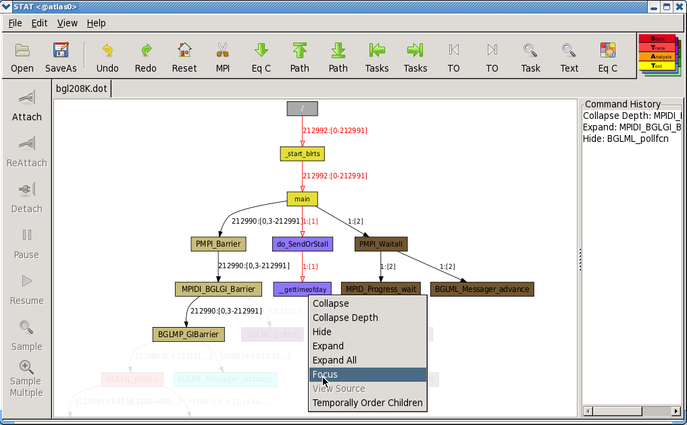LLNL scientists and engineers capture two awards for top industrial innovations
A team of LLNL computer scientists and a team of engineers have won awards from the trade journal R&D Magazine for developing advances among the top 100 industrial inventions worldwide for 2010. One of the teams worked with two universities.
This year's R&D 100 awards, sometimes called the "Oscars of invention," will be presented Oct. 13 during a black-tie dinner at the SeaWorld Conference Center in Orlando, Fla.
"We are pleased by the Laboratory's continued success in producing innovations that benefit the nation and U.S. industry," said Erik Stenehjem, the director of LLNL's Industrial Partnerships Office.
With this year's awards, the Laboratory has captured a total of 137 such awards since 1978. U.S. Department of Energy labs received 36 R&D 100 awards in this year's judging.
"I want to congratulate this year's R&D 100 award winners," said Energy Secretary Steven Chu. "The Department of Energy's national laboratories and sites are at the forefront of innovation, and it is gratifying to see their work recognized once again.
"The cutting-edge research and development done in our national labs and facilities is helping to meet our energy challenges, strengthen our national security and enhance our economic competitiveness," Chu added.
World's fastest light deflector
A team of LLNL engineers and researchers has developed the world's fastest light deflector, which could help record details of the burning plasma inside fusion targets at the Lab's National Ignition Facility (NIF).
Dubbed Serrated Light Illumination for Deflection-Encoded Recording (SLIDER), the instrument makes use of a novel technique that can sweep a beam of light faster than ever before.
In order to better understand the reactions inside a fusion target, the detailed time history of the burning plasma needs to be captured with both fine time resolution, and high fidelity or dynamic range.
Commercial high-speed recording systems suffer from poor dynamic range at the trillionth of a second timescales characteristic of these measurements.
With the SLIDER system, a light beam is deflected at a rate of one resolvable spot per trillionth of a second, enabling a slow albeit high fidelity camera to record an ultrafast signal swept across it with a dynamic range spanning 3,000 levels.
Outside of fusion experiments, SLIDER also may find use in making finer measurements of pulse profiles in ultrafast lasers and high-bandwidth, long-haul telecommunication systems, where conventional recording instrumentation such as oscilloscopes and streak cameras have been used.
A team of LLNL computer scientists has developed a highly scalable debugging tool for identifying errors in computer codes running on supercomputers with 100,000 processor cores and above.
Their work, done in collaboration with researchers from the University of Wisconsin and the University of New Mexico, produced a technology known as the Stack Trace Analysis Tool, or STAT.
Today's largest supercomputers contain hundreds of thousands of processor cores and cost hundreds of millions of dollars. Single faults that disable a small part of a computer code can bring the entire program to a sudden halt, introducing major costs.
STAT is the first tool designed specifically to tackle the challenges of debugging at large scales with the goal of maintaining prompt response times.
The tool works on the principle of detecting and grouping similar processes at suspicious points in a program's execution. This permits users to reduce the problem they are trying to debug to only a small number of processes by picking representatives from each group instead of debugging all processes at the same time.
STAT also includes a powerful graphical user interface that allows the user to identify where a bug exists in an application quickly. The interface can automatically perform several operations that analyze the state of the application and pinpoint potential locations of a bug.
Contact
Stephen P Wampler[email protected]
925-423-3107
Related Links
R&D MagazinePhotons & Fusion
Industrial Partnerships Office
LLNL computing (STAT)
Tags
EngineeringHPC, Simulation, and Data Science
Computing
Lasers and Optical S&T
Lasers
National Ignition Facility and Photon Science
HPC Innovation Center
Energy
Science
Featured Articles









